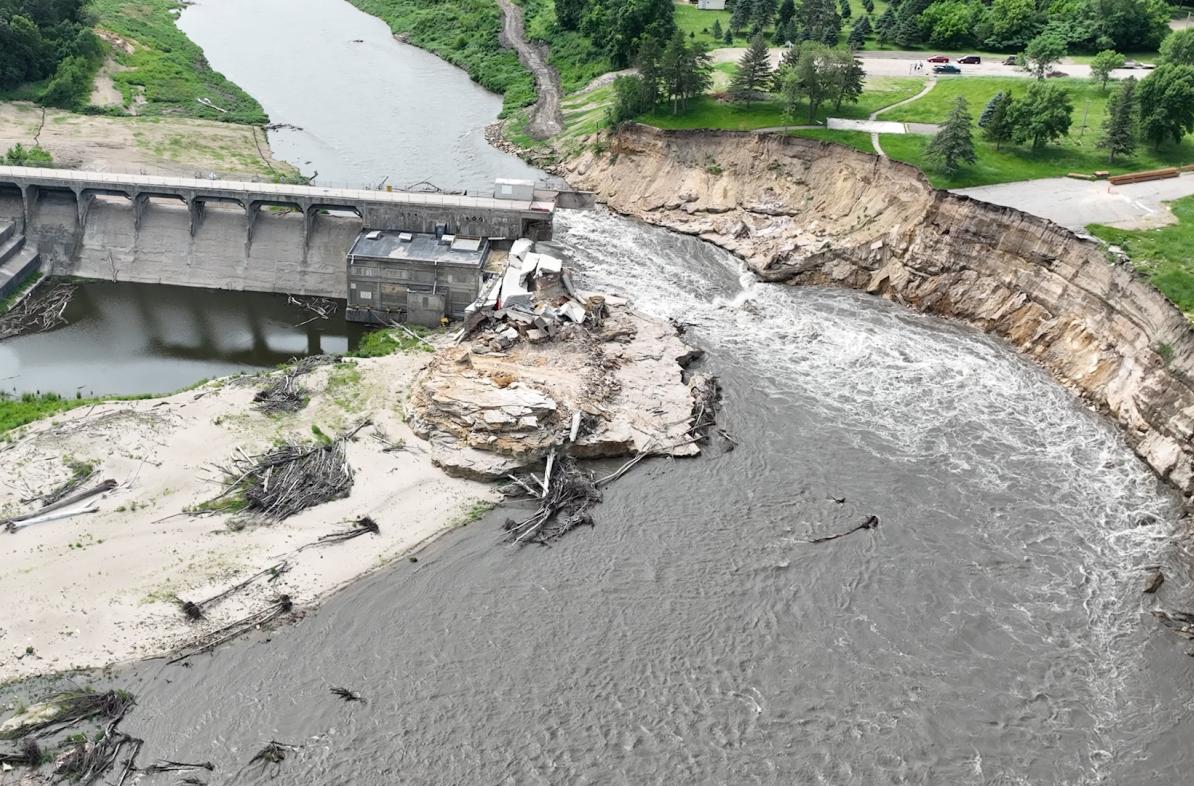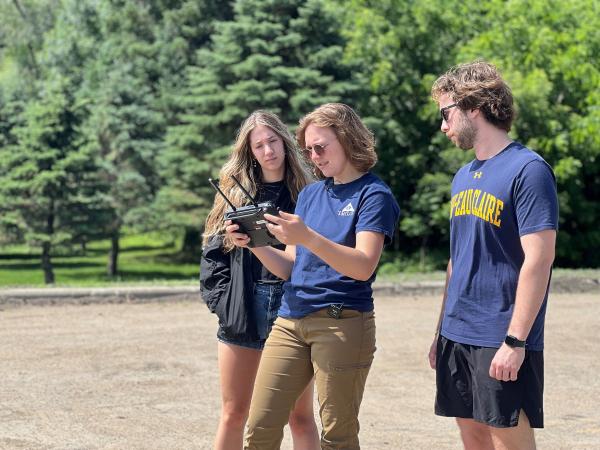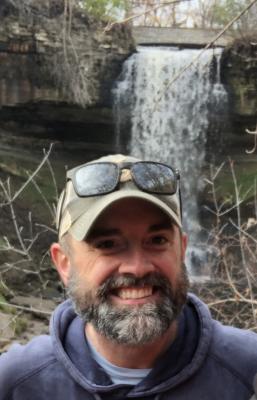Key factors and details of the disaster
In the year since the Rapidan Dam collapse, much has been learned about the natural and human-made factors that contributed to the massive flood and erosion at the dam. Part of the ongoing efforts in the study, Hilgendorf says, is to shine a light on the potential for similar failures elsewhere, giving communities information to help avoid this type of outcome on their waterways.
A summary of the events and current situation at and around the dam:
- The dam was built in 1910 and because of age and damage from previous flooding, a 2023 assessment rated it in “poor condition.”
- Historic rains of 8-9 inches in the region around and upstream from the dam took place from June 22-24, 2024.
- The flood gates were unable to fully open to release the waters, due to decades of fine-grade sediment jamming the mechanics of the structure, along with large amounts of debris stacking up against the dam in those two days of flooding.
- With nowhere else to go, the raging waters pushed their way to the west of the dam, taking with them several riverside structures, an Xcel Energy substation and nearly 220,000 cubic meters of sediment flushed downstream in the first five days. That is the equivalent of 87 Olympic swimming pools, an amount of erosion that has nearly doubled in the months since the event.
“This was not a true ‘failure’ of the dam in the structural sense,” Hilgendorf says. “The mechanics of the flood gates did not work properly, but the basic structure held. It’s what we call an avulsion — the sudden redirection of a river into a new course. The water just forced its way around the dam.”
Other dams in the Upper Midwest, Hilgendorf says, share similar disrepair to the Rapidan Dam, with two other major failures in the region during the weeks surrounding the event in Mankato.
“Within a month, we saw dams fail at Manawa here in Wisconsin and at the Nashville Dam in southern Illinois,” Hilgendorf says.
“One compounding reality is that major rainfalls are becoming more and more frequent, bringing historic amounts of rain. With the average age of dams in the region at 60 years, these aging structures were simply not built to withstand those types of flooding events.”
Hilgendorf believes that more dam failures will be seen, citing recent data from the National Inventory of Dams that assessed 30% of dams in the U.S. to be in the category of “significant/high” risk for failure.
“The recreational, water management and energy production that dams offer communities is a huge benefit, but there can also be a cost to altering the landscape,” Hilgendorf says.
According to Hilgendorf, dam reservoirs provide great fishing and boating, but their waters can bring challenges. Stagnant waters in reservoirs can become unhealthy for fish when suspended sediment darkens the water, causing heat retention and reduced oxygen levels. Reservoirs can also become too high in certain nutrients that promote algae blooms which also reduce oxygen levels in the water.
“We hope our study will help to quantify the impact of dams on river systems and help communities weigh the benefits and risks as they examine the health of their own waterways,” Hilgendorf says.
Career-shaping student research opportunities






